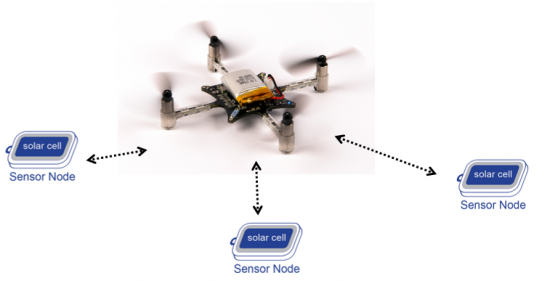Difference between revisions of "Gomeza old project2"
From iis-projects
(Created page with "thumb|550px] ==Short Description== At IIS, we are working on a self-sustainable wireless sensor node for monitoring radioactively c...") |
|||
| Line 49: | Line 49: | ||
[[Category:Available]] | [[Category:Available]] | ||
[[Category:Master Thesis]] | [[Category:Master Thesis]] | ||
| + | [[Category:System Design]] | ||
<!-- | <!-- | ||
Revision as of 18:01, 3 February 2015
]Contents
Short Description
At IIS, we are working on a self-sustainable wireless sensor node for monitoring radioactively contaminated and poorly accessible areas. The node is meant to be used in conjunction with a quadcopter, who is tasked with air-dropping wireless sensor nodes at suitable locations and acquiring data logs via low-power, short-range radio communication. The sensor node must employ energy harvesting and adaptive power management techniques to continuously monitor radioactivity levels in hazardous areas. A first prototype using off-the-shelf components has developed as a proof-of-concept, which include a low power nuclear sensor, a low power RF module, a microcontroller, a supercapacitor for energy storage, and a solar panel for energy harvesting. The main objective of this project is to design a new version of the sensor node with the added functionality of a nano-power wake-up radio. Fully passive or nano-power wake up receiver can greatly reduce the power consumption of sensor nodes without compromising their response time. This is important to the nodes lifetime and the dimension of the required energy storage. The node’s form factor must designed and implemented with self-sustainability in mind as it will be deployed in inaccessible area by drones with limited carrying capacity. By the end of this project a functional node will be tested in a simulated environment.
Status: Available
- Looking for 1 Semester/Master student
- Contact: Andres Gomez
Prerequisites
Character
- 20 % Theory
- 50 % Implementation
- 30 % In-field testing and simulations
